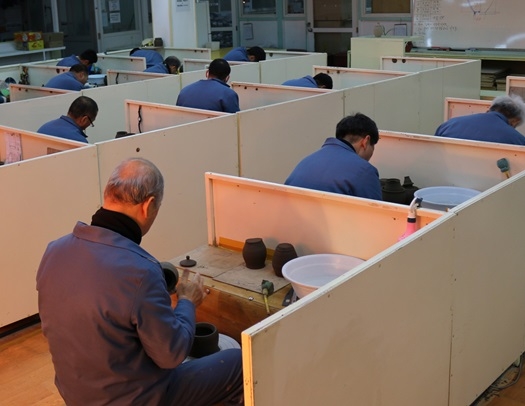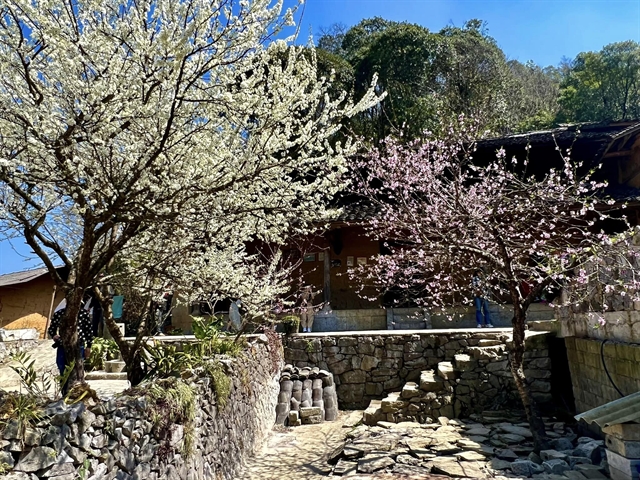 Travel
Travel

Thanh Hà
The mountainous province of Hà Giang is not only well known nationwide for its specialties such as mèn mén (steamed maize powder) and bánh chưng gù (hunchback glutinous rice cake), but also bánh đá (a rustic cake made from upland glutinous rice) made by the ethnic groups of Dao and Nùng.
A Dao woman, Nông Thị Ngà, said bánh đá came into being hundreds of years ago. “According to local history, it symbolises thriving, warmth and reunification of family members in the New Year. The cake is one of indispensable items at the Tết holiday and special celebrations such as new rice crop of Dao and Nùng ethnic groups."
Bánh đá is also called Lơ Khoải in Dao language, said Ngà who offered up this recipe for making the cake.
After harvesting ripe glutinous and ordinary rice, locals have to choose good grains and then mix them all together before soaking it in water for between five and six hours before drying it and grinding it into a powder, said Ngà.
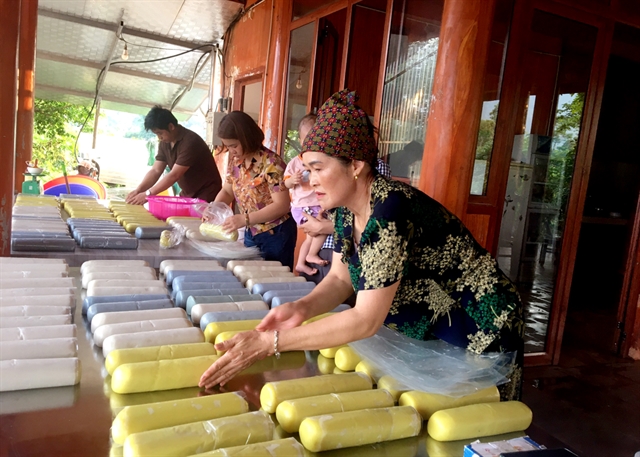 |
| Stone cake (bánh đá) is said to be one of Hà Giang's specialties. Photo baohagiang.vn |
The mixture is then steamed until it is well cooked and then ground again, before kneading the dough into round, flat shapes or different shapes according to family traditions, she said.
This seems simple enough, said Ngà, adding that making bánh đá of Hà Giang’s to the exacting standards however is rather complicated and the cook needs to invest a lot of time and effort in the cooking processes.
She revealed a number of secrets to make tasty the cake. They include choosing new and fragrant upland glutinous and ordinary rice, soaking for no less than five hours so it is easy to grind, knead it to the correct medium size about two fingers each (not too big or too small), boiling the cake well, fermenting it in straw to have its own characteristics and dry it under the sunlight until it is completely ready. “Before cooking you should soak the cake in cold water so it becomes soft again,” said Ngà.
Ngà also advised on the best ways to enjoy the cake.
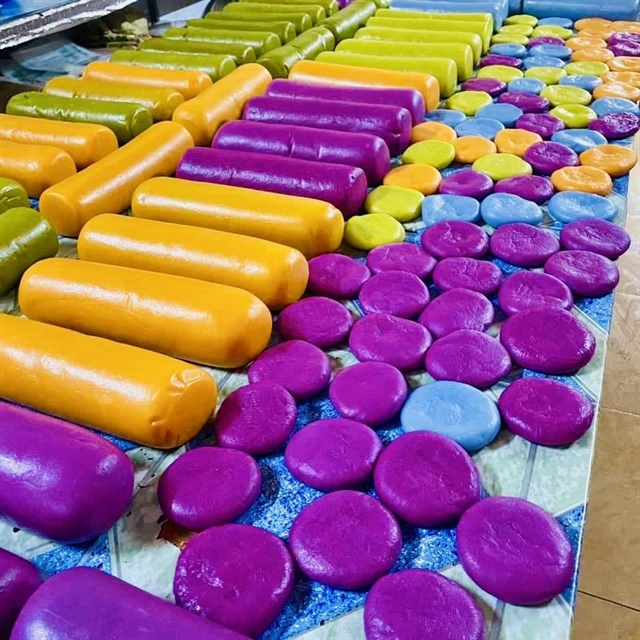 |
| Colourful bánh đá is not only available in Hà Giang but also sold via social networks. Photo baohagiang.vn |
“If wishing to completely enjoy the cake with an Hà Giang original flavour, after taking the cake out from the water, the cook should clean it well before cutting it into threads to fry it in cooking oil, or mix it with fermented anchovy dipping sauce (bánh đá mắm) or use it as an attractive ingredient to cook floating sticky rice (locally known as bánh thắng dền) - a specialty of Hà Giang," she added.
How to cook bánh đá mắm
The stone cake needs to be cut into threads, boiled until it becomes soft and then it needs to be mixed with fermented anchovy sauce (mắm nêm), chilli and lemon juice.
“Gourmets will never forget their first taste of this cake, the dish’s genuine characteristics, salty and sweet from the mắm nêm, spicy from the chilli, tart from the lemon, and soft and chewy from the stone cake itself,” said Ngà.
How to cook thắng dền
First boil sugar with water and put pieces of ginger into the pot while cutting the bánh đá into threads and then adding them to the water and simmering them until they are soft.
Put the mixture into a bowl and then pour over the sugar-ginger water, topped with coconut threads and roasted peanuts.
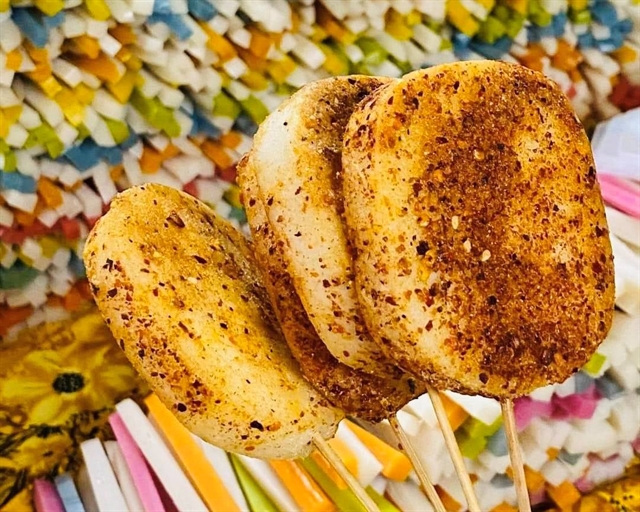 |
| Many foodies become addicted to fried bánh đá dipped in chilli juice. Photo vietnam.vn |
“This dish has attracted many foodies and travellers’ interests to Hà Giang,” said Ngà.
Sào Thị Voòng from Tuyên Quang said she was at first simply curious about the bánh đá until she bought several packages home and deep-fried it.
“It was so fragrant from the mountain glutinous rice in addition to the lovely buttery taste, and it was so soft attracting all of our family members. It was even more enjoyable when dipping it in chilli juice mixed with fish sauce,” she said.
The stone cake is such a hot trend that it is now being sold on social networks with prices ranging from VNĐ40,000-VNĐ60,000 per kilo, said Vàng Thị Liên, a producer in Hà Giang’s Đồng Văn District’s Phó Bảng Town.
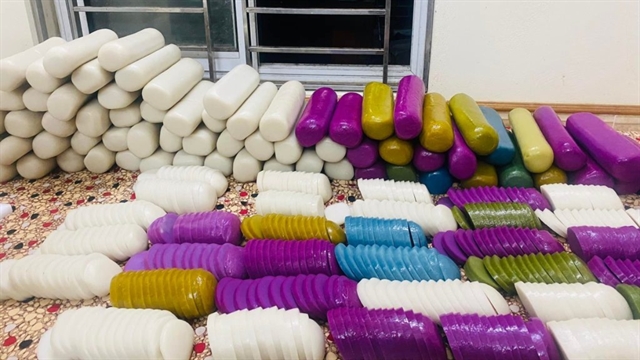 |
| Visitors and travellers to Hà Giang often buy bánh đá home as special gift for their relatives and friends. Photo baohagiang.vn |
Liên told Việt Nam News that in the past no one in her town had a refrigerator, so her grandparents had to dry the cake and keep it in storage before eating, so each time if they wanted a taste of the cake they had to soak it in cold water for 5-6 hours before cutting it for cooking.
Now those who make the cake often cut it into thin slices from 1-2cm wide to serve diners wishing to fry it or slice it into thinner threads for hotpots and other dishes, said Liên.
“We also use natural leaves and fruits such as pandan, butterfly pea flower or turmeric to mix with glutinous-ordinary rice to produce colourful bánh đá to supply increasing demands,” said Liên. VNS

